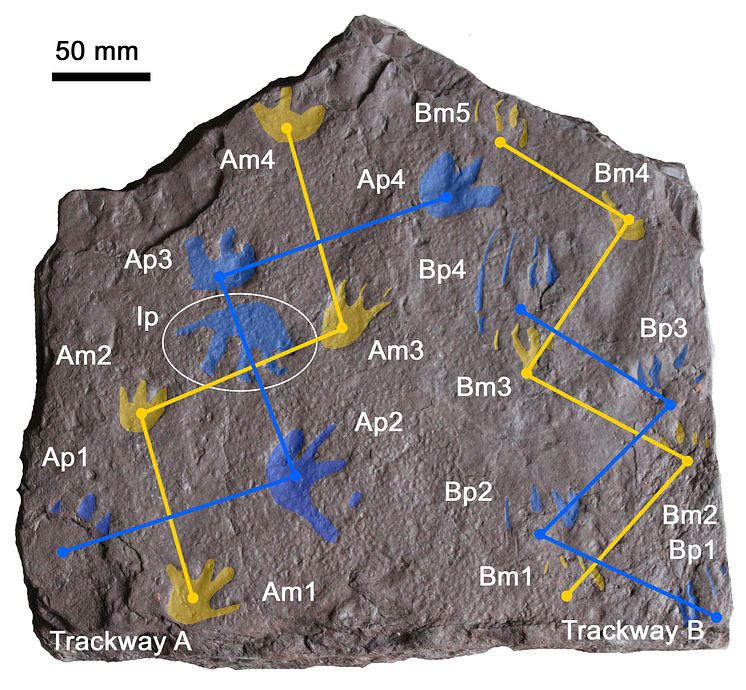
Image -
Reptile tracks
Fully labelled image of the Australian slab, showing interpretation of the tracks. Footprints of front feet (manus) are shown in yellow, hind feet (pes) in blue. The slab carries two trackways, A and B. For each of these, the footprints are coded as follows: Am1 to Am4 means “Trackway A, manus print 1” to “Trackway A, manus print 4”. Ap1 etc. means “Trackway A, pes print 1” etc.. Bm1-4 and Bp1-4 mean the same for Trackway B. Blue and yellow zig-zag lines linking prints indicate the sequence manus and pes prints in each trackway. The label “Ip” next to a white oval means “Isolated pes print”, a single footprint facing the opposite direction to the trackways.
Grzegorz Niedźwiedzk
- License:
- Media Use
The content may be downloaded by journalists, bloggers, columnists, creators of public opinion, etc. It can be used and shared in different media channels to convey, narrate, and comment on your press releases, posts, or information, provided that the content is unmodified. The author or creator shall be attributed to the extent and in the manner required by good practice (this means, for example, that photographers should be attributed).
- By:
- Grzegorz Niedźwiedzk
- File format:
- .jpg
- Size:
- 2827 x 2613, 2.18 MB